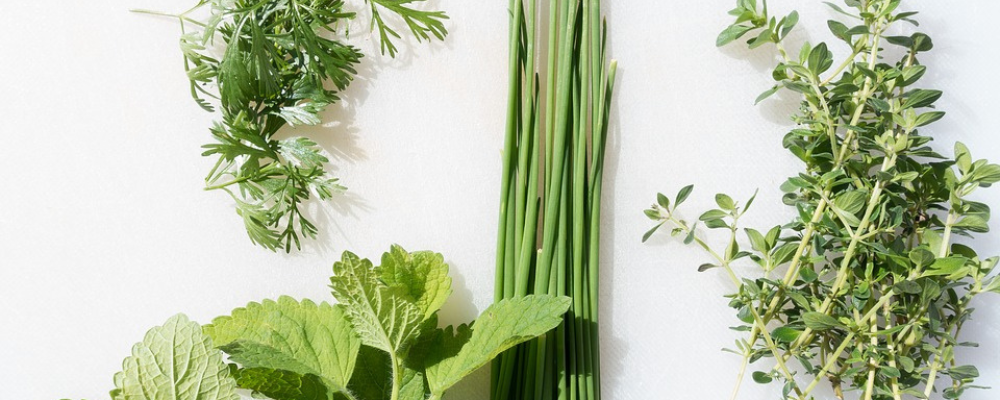
7 Ways to Best Preserve Spring Herbs
— By Kate McCarty, Food System Professional, University of Maine Cooperative Extension
It’s feeling springy in Maine, and while herbs won’t be ready in Maine gardens for months, springtime feels like the season to start adding fresh flavors to your meals using herbs. But oftentimes, purchasing herbs leaves you with much more than you need, and the excess can go bad quickly if you don’t have a plan. So be proactive and give these quick ways to preserve herbs a try:
1. Extend herbs’ longevity
First, make sure you are storing your herbs properly so they last as long as possible. We find that storing bunches of herbs in a glass of water in the fridge will keep herbs perky for at least a week. Covering the herbs with a plastic bag helps them from wilting too.
2. Dry herbs
Drying (also called dehydrating) herbs is the easiest—it’s hands off and pretty easy. Simply bundle up the herbs you wish to try and tie the stems loosely with a rubber band or piece of string. The bunch should be smaller than the diameter of a quarter or you run the risk of mold forming. Then place the herb bundle in a small paper bag and hang it in a warm, dry place. The herbs are dry when the leaves crumble easily between your fingers and are best stored in an airtight container. Protip: to substitute dry herbs for fresh herbs in a recipe, use a third of the amount called for—i.e. If a recipe calls for a tablespoon of fresh herbs, you can use 1 teaspoon of dried herbs instead.
3. Freeze in broth or oil
Herbs freeze well, but without anything to protect them, they often turn black and are unappealing. Instead, finely chop herbs or blend with a liquid like water, broth, oil, or melted butter. Portion the herb mixture into ice cube trays, reusable glass or plastic containers, or plastic zip-top freezer bags. Be sure to label what you’ve made so you use it later.
4. Make compound butter
Chefs in fancy restaurants rely on herb-flavored butters, and you can also make some to take your home cooking to the next level. Simply finely chop herbs and mix with softened butter, then shape into a log on a piece of wax paper. Wrap the butter and label it for later use. Think chive butter with warm bread or a thyme-rosemary butter on grilled steak or mushrooms. Refrigerate herb butters for up to a week or freeze for long-term storage.
5. Freeze dry herbs
Freeze drying is a trending method of home food preservation as the use of home freeze dryers becomes more widespread. This appliance freezes food and then creates a vacuum, which removes more than 95% of the food’s moisture. It preserves food’s color and flavor, and freeze-dried foods have a very long shelf life. Herbs freeze dry quickly (in less than 12 hours) and look much like fresh herbs do; they’re just dry and crispy!
6. Infuse vinegars
The flavor of herbs can be captured in vinegar and used in marinades and salad dressings. This fact sheet about herbal vinegars details how to safely infuse vinegars. Unfortunately, putting fresh herbs or garlic in oil can create the risk of botulism, so this is not recommended. But herbal vinegars can add flavor to your cooking without the safety risk.
7. Blend up some pesto
Pesto is easy to make and a great way to preserve large quantities of herbs. Pesto is a mix of herbs, cheese, garlic, nuts, and salt that is typically made from basil, Parmesan, and pine nuts, but it can be made from a variety of creative herb and nut combinations. Pesto cannot be canned, as there are no researched canning times, but it freezes well. The National Center for Home Food Preservation warns that garlic can become bitter when frozen, so consider leaving the garlic out of your pesto if you are concerned. Portion pesto into ice cube trays or small jars, label, date, and freeze. Use pesto on roasted vegetables, chicken, pasta, or mix with mayonnaise and spread on sandwiches.
With this list of tips and techniques for preserving herbs, hopefully you’ll be able to avoid herbs going to waste. Our recipe directory has lots of great ideas for dishes that use herbs, like this Dilly Carrot Pie with a Nut Crust and the New Maine Potato Salad. Happy spring!
